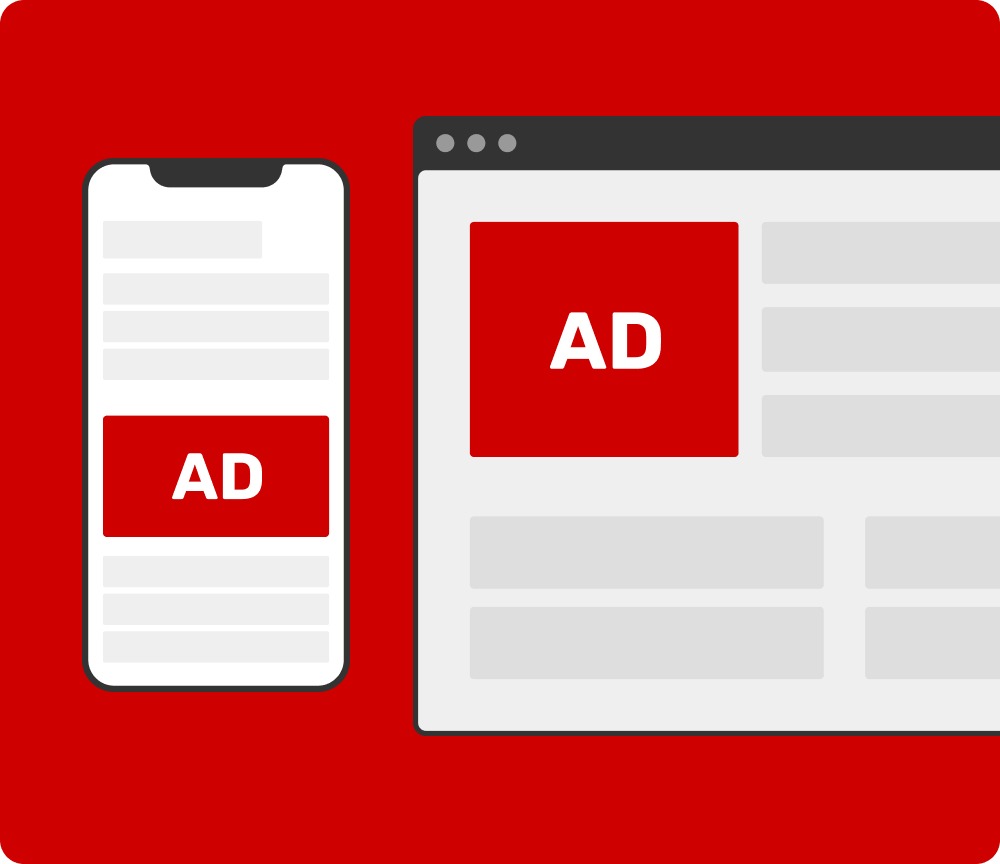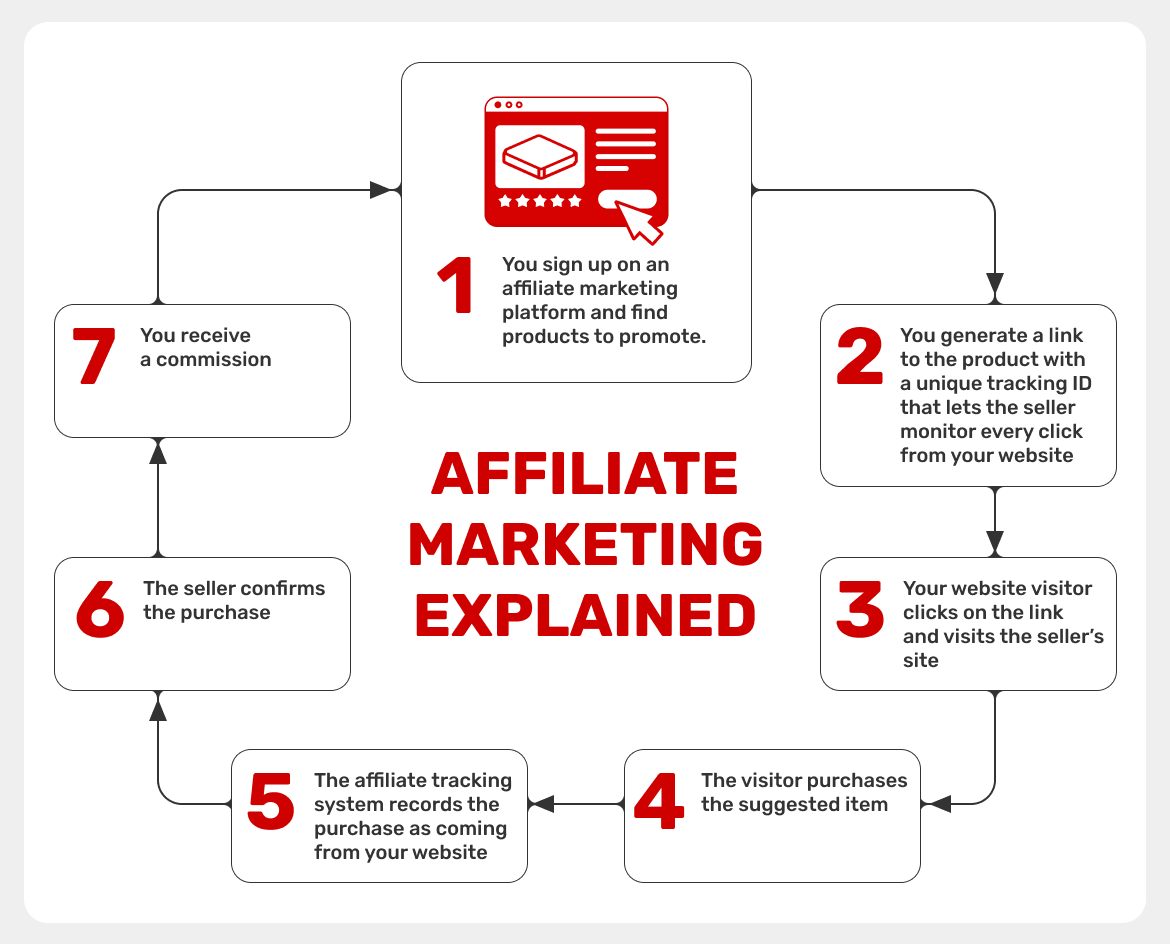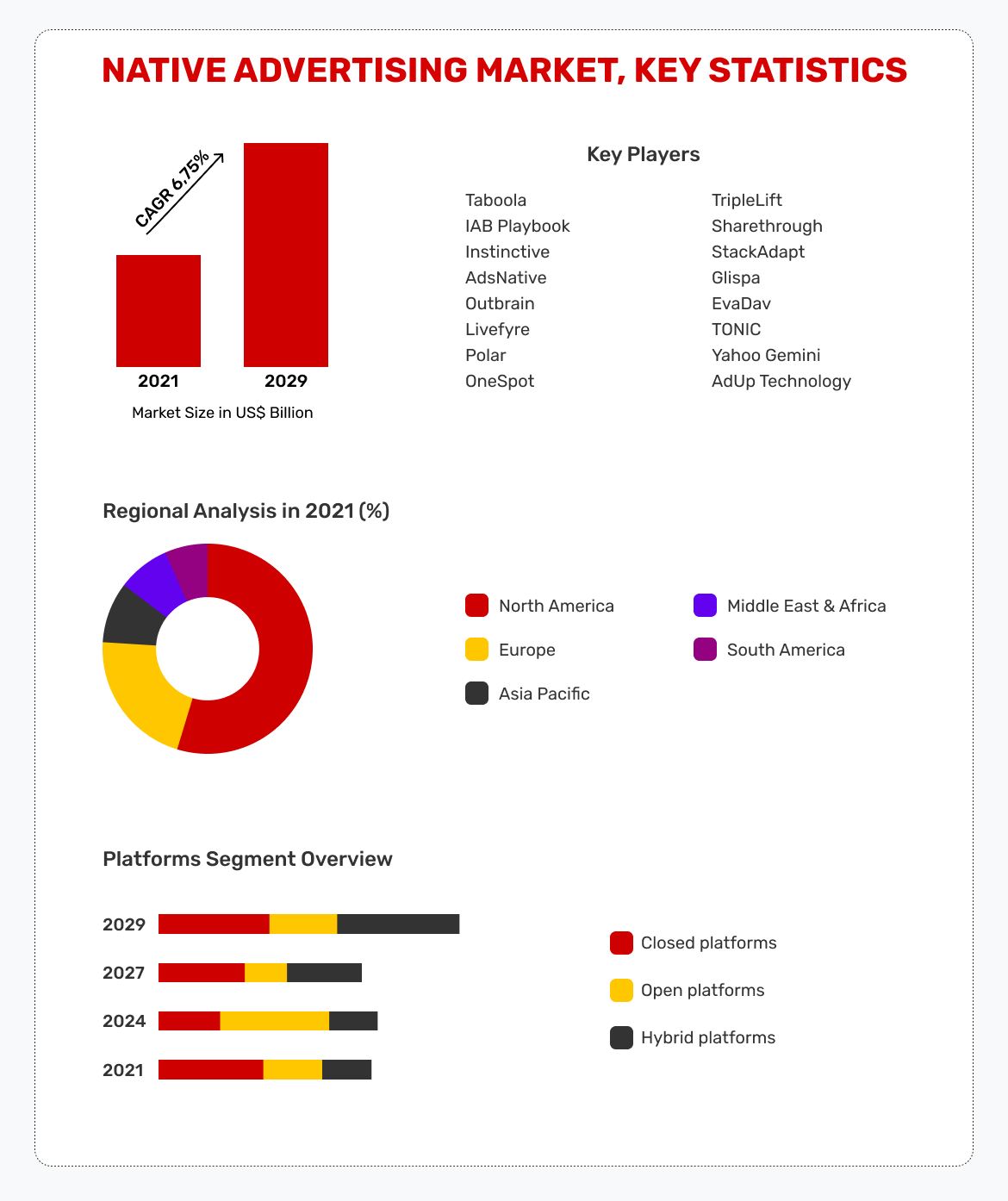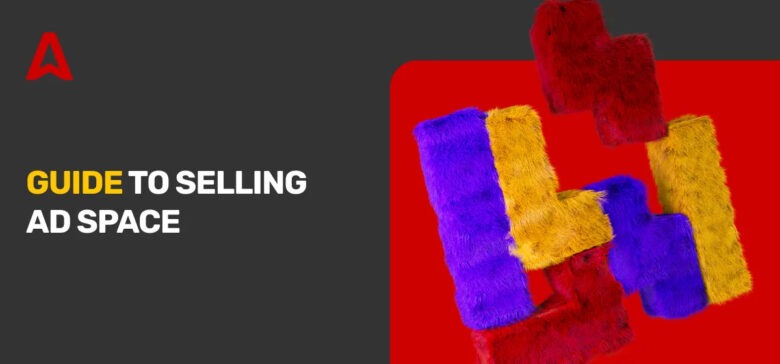Selling advertisements for your website might seem complicated at first glance. Where do I find advertisers? How much can I make from it? What type of ads can I run? These are common questions that site owners ask. This article will answer them and show you how to sell advertising effectively. There’s no limit on your earnings if you play your cards right.
What is ad space?
Ad space refers to the sections of your website where third parties can place advertisements. You’ll commonly encounter ad spaces at the top and bottom of a website, a sidebar, or in the middle of articles. These spaces showcase different types of advertisements, including Banners, Native Ads, Push Ads, etc.
Every publisher decides the sections of their website where brands can place their ads.

You can become an Adsterra publisher regardless of your traffic level and gain access to 15,000+ reputable advertisers. We support website-friendly ad formats, including Popunders, Native Banners, and Social Bar, to deliver you significant revenue.
What does selling ad space mean?
Allocating ad space is easy, but it’ll serve you no good if no one advertises on it. Selling ad space involves finding third parties willing to showcase themselves to your audience. You can sell the space directly to the advertisers or go through an intermediary. The latter is known as an ad network, and there are many examples, including Adsterra.
Selling ad space: how it works
There are two main approaches:
- Selling directly to advertisers: You can pitch brands and businesses relevant to your target audience to buy ads on your websites. This method usually earns you higher revenue, but finding willing advertisers and negotiating deals is challenging.
- Selling via an ad network: An ad network handles the difficult part of finding advertisers. The network already has its collection of advertisers, so you can just sign up and connect with them. The network collects a fee on your ad revenue.
Basic requirements for selling ads
There are specific requirements to meet to find advertisers for your website. You need good traffic because brands want to showcase themselves to an engaged audience. You also need to publish high-quality content people are willing to place ads next to, and your site should have an appealing design and look. Let’s expand more on these requirements below.
Traffic
Traffic is the number of people viewing and engaging with your content. Your website should have a sizable audience to court advertisers. You must not have very large traffic or following, but having thousands of monthly visitors is a good place to start. The good thing is that most ad networks, including Adsterra, don’t have minimum traffic requirements, so you can start small and boost your earnings as your traffic grows.
You can follow certain practices to increase your website traffic, including using creative headlines, optimizing your content for mobile displays, targeting keywords with high search potential, and publishing long-form content.
Join Adsterra and connect with 15K+ advertisers launching 200K+ ad campaigns every year. Earn with top formats like Social Bar and Popunder, and enjoy fast payouts. Start now—it’s quick and simple!
High-quality content
High-quality content refers to things people want to read or watch. Put yourself in your target audience’s shoes and ask, “What type of content am I likely to click on?”, “What type of content would make me want to return to a website for more information?”
Your posts should be simple to read and understand. Provide factual information to viewers. Avoid using verbose and unnecessary language or writing bluff content that bores the user.
Design and usability
Your website’s interface should be intuitive and easy to use. It should have a visible navigation bar and clear indicators for navigating from one page to another. Preferably, have a menu at the top or bottom of the website with links to all the post categories.
Your website should use colors and fonts that are attractive to most people’s eyes. Use high-quality images, videos, and infographics to illustrate your point.

Audience
You should have a loyal audience that engages with your posts. It’s better to have smaller page views with a loyal audience than large views with a disengaged audience. However, having fewer readers who stay on a website and navigate between pages can actually boost ad monetization. In contrast, a large audience with high bounce rates will fail to generate any payout if they leave before an ad has even loaded.
It is important to focus on keeping readers engaged and interested in the content so that they are more likely to interact with the ads. By maximizing engagement and dwell time, publishers can increase the value of their ad inventory and generate more revenue.
Transparency
You must be truthful when interacting with potential advertisers. Give factual information about your traffic level, page views, social media following, brand appeal, etc. Any willing advertiser will request all this information to decide if your site is worth placing ads on, and you should give it to them. Be open about your site’s strengths and shortcomings.
Want to generate passive income just by placing ad codes? Register (it’s free forever) and choose between the highest-paying formats
Top ways to sell ads and maximize your revenue
Advertisement is the most common way of monetizing websites, but it’s not simple. There are several approaches to take to achieve good results. You can combine different approaches to see which ones work best for you. Let’s explain them below.
Sell directly
You can contact potential advertisers directly and pitch to them. This method doesn’t need an intermediary, meaning you can keep all your revenue. However, pitching directly to brands is challenging, and you should expect many rejections along the way. It requires considerable time and effort but will yield good results if you do it well.
Ensure you have a press kit containing important statistics about your website (page views, number of social media followers, number of unique visitors, etc.) when pitching to brands.
Pros
- You retain 100% of your revenue, as no third party takes a cut. Direct campaigns also earn higher revenue than non-direct ones.
- You can set your own advertising rates and find people willing to pay those rates.
- You can build long-term, lucrative relationships with advertisers by working with them directly.
- It gives you more control over your ad inventory, so you can decide when to show ads.
Cons
- It’s difficult to find advertisers and negotiate deals with each one. Getting brands to accept your pitches is the first roadblock; you’ll face another obstacle of negotiating good rates.
- This method is best reserved for sites with massive traffic. Most brands aren’t willing to work directly with websites that don’t have a large and unique audience.
- You’ll likely need to employ a sales team to pitch directly, adding more overhead.
Affiliate advertising
This method involves promoting products or services in exchange for a percentage of sales referred by your website. You’ll get a unique link for the product with a tracking ID that lets the brand know which clicks originate from your website. When someone clicks on your link and purchases the suggested product, you’ll get a cut of the sale. You can earn a significant amount this way.
Pros
- Affiliate advertising pays very well if you generate significant sales. You can earn up to 30% of each sale referred from your site.
- Easy to begin. There are endless affiliate marketing networks to sign up on. Most have minimal requirements, so you don’t need much traffic to join.
- Affiliate links in your text are less distracting than display ads with images and videos.
Cons
- You’ll likely only get paid when someone referred by your website purchases a product. No purchase means no pay, regardless of how many views you send to the retailer.
- Affiliate marketing is a very competitive industry, with many publishers vying for relatively few advertising dollars.
- It can be challenging to identify the right products to promote to your audience.
The 80/20 rule for affiliate marketing
The 80/20 rule applies to many areas, including affiliate marketing and general online advertising. This rule, widely known as the Pareto Principle, states that 80% of outcomes originate from 20% of causes. In this case, 20% of affiliate marketers are the most productive and profitable.
80% of affiliate publishers get paid per sale, meaning they only earn money when someone buys the product they advertised. 18% of affiliate publishers get paid per suggested action, e.g., adding an item to the cart. The remaining 2% make money via cost-per-mille (per thousand views) or cost-per-click.
How does affiliate marketing work?

Ad networks
Ad networks offer an invaluable service to publishers. Most website owners don’t have the time and resources to pitch directly to numerous brands and hope that a few buy ad slots. This constraint is more pronounced in the early stages when you need to focus more on creating content.
Ad networks connect publishers to advertisers via a single platform. It takes care of the harder part of courting advertisers, while the publisher just links up with them without much effort.
What is an ad network?
It is a sort of marketplace connecting advertisers to website publishers. It matches ad slots from publishers with ad inventory from brands and businesses. The network charges the advertisers via these ways:
- Cost-per-action (CPA): Pay for every suggested user action, e.g., signup or subscription.
- Cost-per-click (CPC): The advertisers pay for each click on their ads.
- Cost-per-mille (CPM): Pay per thousand ad views.
The ad network takes a percentage of every transaction and passes the rest to the publishers.
Check out this example ad that Google placed on Bloomberg, a popular financial news site, via an ad network;

Why are ad networks needed?
Ad networks link up the right advertisers to the right publishers. It helps website owners find advertisers relevant to their target audience. Otherwise, the search will be random and complicated. The ad networks also negotiate ad rates on behalf of their publishers, taking a major burden off them. Finally, they screen the advertisements to ensure they are safe.
Native advertising
Native ads come as a separate format in many ad networks. It looks similar to your content, such that readers may not even notice it’s an advertisement. The advantage of native ads is that they’re less disruptive to the user experience. These days when many people are experiencing ad fatigue, native ads let you earn money with minimal disruption to your readers.

Source: Maximize Market Research
Pros
- It’s easier to capture user attention because the ads aren’t intrusive or distracting.
- It works well as you scale your traffic.
- It helps you build credibility with your audience, as they trust that your ads aren’t distracting.
- Native ads command higher CPM or CPC than other types of ads. You can also create custom advertisements and seek brand sponsorships to boost revenue.
Cons
- It’s more difficult to measure the performance of native ads than other types of ads.
- It takes more time and effort to create and manage native advertisements because they must blend into the surrounding content.
- Native ads can seem deceptive because they’re hardly noticeable. Hence, you should always use disclaimers such as Paid, Sponsored, or Ad to inform the user.
Adsterra supports Native Banner ads that help improve your click-through rate and earn you higher revenue. Plus, with a 100% fill rate and quality ads tailored to your audience, you’ll never miss an opportunity to monetize your traffic.
Programmatic advertising
Programmatic advertising is an automated method of selling advertising via a third party. There are two main parties in the process; a Supply-Side Platform (SSP) and a Demand-Side Platform (DSP)
Publishers sign up on an SSP and provide their ad slots. Advertisers bid in real-time for the slots via the DSP, and an algorithm determines which ad will be shown at a specific time.
Pros
- It involves competitive bidding, meaning publishers get high prices for their ad slots.
- The entire ad buying process is automated, giving publishers more time to focus on creating content and increasing traffic.
- Programmatic ad marketplaces tend to have a lot of advertisers, which gives publishers a near-100% guarantee of filling their ad slots.
Cons
- Programmatic ad marketplaces often have high minimum traffic requirements, which locks out most publishers.
- The entire process is automated, meaning there’s a higher risk of ad fraud because no human monitors it.
- Your site may get matched with advertisements irrelevant to your target audience. Irrelevant ads can reduce your credibility with users.
What’s better: sell directly or through an ad network?
Selling ads directly can be tempting because it produces higher revenue. However, there are some notable stipulations;
- You need a high amount of traffic, think hundreds of thousands of monthly page views, for advertisers to consider working with you directly.
- It takes significant time and effort to pitch to advertisers and negotiate ad deals.
On the other hand, most ad networks have no minimum traffic requirements and remove the challenging process of pitching to advertisers directly. Going with an ad network is advisable unless you are a very large publisher.
Looking for more tips to grow your earnings? Follow Adsterra on Instagram for easy advice, updates, and ideas to help you succeed!
What are the requirements to sell ads on your properties?
- Have an engaged audience. The audience must not be huge, but they should like your content enough to interact with it and share it within their social circles.
- High-quality content. Publish content that is easy to read and digest. Use infographics and images to illustrate your articles. Cite statistics and other sources when required.
- Good design. Your site should look aesthetically pleasing. Optimize it for both desktop and mobile displays.
- High traffic. Sites with a higher number of visitors command higher advertising rates.
Where do I start?
We’ve covered the major ways of selling advertisements on your website. You can either start pitching to brands directly or sign up on an ad network and get access to an existing ad inventory. Each method has its pros and cons.
Important things to consider before starting include
- How much do I want to make?
- What type of products do I want to advertise?
- Do you want a specific brand or sponsor?
- What type of ad creatives should I place on my site?
What is the impact of AI on ad space sales?
Over the past four years, the use of AI in marketing has increased by 55%. AI is changing how ad space is sold, combining intelligence and automation to make the process faster, smarter, and more profitable. This rapid adoption highlights how essential AI has become for publishers. Here’s how AI helps:
- Better ad placement. AI studies how people behave on websites and finds the best spots for ads. This increases clicks and helps publishers make more money.
- Smart pricing. AI adjusts ad prices based on demand, user interest, and advertiser needs. This ensures publishers get the most revenue from every ad slot.
- Precise targeting. AI divides audiences into groups based on their browsing habits, interests, and demographics. This helps show ads to the right people at the right time.
- Seamless ad integration. AI can suggest changes to website content and layouts to make ads fit naturally. This improves the user experience while keeping ads visible.
- Fraud protection. AI spots unusual activities like fake clicks or bot traffic. This protects ad campaigns and ensures trust between publishers and advertisers.
- Improved user experience. With AI, ads are more relevant and less disruptive, helping users stay engaged with the content.
Conclusion
We have explained in detail how to sell ads on your website. You can either do it directly or go through a third-party network, with the latter being the easier option. There are lots of ad networks to choose from, but we recommend Adsterra because it unlocks access to a high-quality pool of advertisers and supports many types of advertising formats.
FAQ about how to sell advertising
You can pitch directly to brands and businesses to buy the ad slots or sign up on an ad network with an existing inventory. The latter is the easier option, removing the stress of giving numerous sales pitches and managing client relationships. However, direct ad sales tend to bring higher revenue.
There’s no limit on what you can sell ad space for. It depends on various factors, including your traffic, audience engagement, brand appeal and following, etc. To invoke a popular economic quote, an ad slot on your website is worth as much as someone is willing to pay. Don’t be afraid to charge what you think you’re worth if you’re selling ads directly.
You can dedicate some sections of your website to advertising slots. The next step is to find willing advertisers, and you can do that directly or via an ad network. Once you find advertisers, they’ll pay you either per click, per action, or per thousand impressions. You can also get paid for advertising by running affiliate ads and earning commissions on every sale referred by your website.
Yes, you can. Most ad networks don’t have minimum traffic requirements, which favors publishers just starting out and without significant traffic. You can sign up with relatively low views and increase your revenue alongside your traffic. However, if you want to sell ads directly, you’ll need significant traffic and following.
